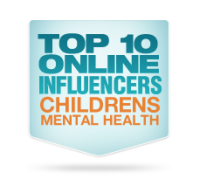 Thanks for stopping by to check out the eighth installment in Jolene Philo’s weekly series about childhood PTSD. Today, we’ll investigate why PTSD in children is frequently misdiagnosed. We’ll also talk about some of the most common misdiagnoses for PTSD in children, also known as childhood developmental trauma.
Thanks for stopping by to check out the eighth installment in Jolene Philo’s weekly series about childhood PTSD. Today, we’ll investigate why PTSD in children is frequently misdiagnosed. We’ll also talk about some of the most common misdiagnoses for PTSD in children, also known as childhood developmental trauma.
Have you ever taken your child to the doctor with a handful of vague elusive symptoms? Perhaps a stomach ache, a head ache, an on-and-off sore throat, or a rash that comes and goes. Making the right diagnosis depends on several different factors: your child’s ability to describe how he feels, whether or not the symptoms are presenting during the appointment, your own powers of observation and your ability to convey them to the doctor, the doctor’s skill level, the existence of an accurate lab test to confirm or eliminate a possible diagnosis.
Why Childhood PTSD Is Misdiagnosed
 Many of the challenges a doctor faces in making an accurate diagnosis are similar to those faced when diagnosing mental illness. But because mental illness is harder to see than a rash, a broken bone, or a petri dish culture, the difficulties surrounding diagnosis may be magnified. With that in mind, here are some reasons childhood PTSD is often misdiagnosed.
Many of the challenges a doctor faces in making an accurate diagnosis are similar to those faced when diagnosing mental illness. But because mental illness is harder to see than a rash, a broken bone, or a petri dish culture, the difficulties surrounding diagnosis may be magnified. With that in mind, here are some reasons childhood PTSD is often misdiagnosed.
Age of the child. Children traumatized between birth and age 3 don’t have words to describe what happened to them. Young children over 3 may not have enough expressive language to accurately relay events. They may not have the counting or sequencing skills to report how many times or in what order abuse occurred. These limitations also apply to older children with developmental delays.
Regression. Many children regress after a traumatic event. If the language skills of a child who had the vocabulary and ability to describe experiences before a traumatic event regresses, the child may not be able to do so afterward.
Memory problems. Children often push down or block traumatic memories when they try to resurface. Or they numb their emotional response to the memory and don’t act distressed on the outside.
Avoidance. Many children want to avoid bringing back frightening memories. So when a psychologist or mental health counselor asks questions about what happened, children give only brief, surface answers.
Inaccurate reporting. Parents and caregivers are unlikely to tell the truth about a child’s trauma if they caused it. Birth parents downplay their use of tobacco, alcohol, or drugs when talking to adoption agencies. Some parents lie to keep the child in the home and avoid prosecution. Neglect and abuse is underreported by orphanage staff to improve a child’s chances for adoption. Sometimes adoptive and foster parents are unaware of traumatizing events the child experienced in the past.
Confusing symptoms and/or multiple mental health disorders. Many trauma symptoms are similar to the symptoms of other childhood mental illnesses. Also, diagnosis is more difficult for children living with more than one mental illness. Sorting out which symptoms are trauma-related and which ones aren’t can be a challenge.
How Childhood PTSD Is Misdiagnosed
Now that we know why childhood PTSD is misdiagnosed, let’s look at how it is misdiagnosed. As you read through this list, keep in mind that childhood trauma is a clever impostor, able to mimic other childhood illnesses with similar symptoms.
Attention-deficit/hyperactivity disorder (ADHD). This misdiagnosis is made because of the way children respond to intrusive memories of trauma. Their internal reliving of the memory results in a lack of concentration that resembles ADHD. Or the memory makes them move onto something new in an attempt to avoid it. Also, a traumatized child on high alert may appear jumpy in the day and have sleep difficulties at night: two more symptoms of ADHD.
Bipolar disorder. Bipolar disorder—renamed in the DSM-5 as disruptive mood dysregulation disorder—is another common misdiagnosis. Think of the bits of a child or adult where unresolved traumas are trapped, as “parts.” When one of the traumatized parts is triggered by an event in the present, it responds as it did during the original trauma. These responses are often highly emotional and immature responses, so they look like the mood swings used to diagnose mood disorders.
Oppositional defiant disorder (ODD). One symptom of ODD is anger and irritability. Traumatized kids often respond to frightening situations or memory triggers with angry outbursts and irritability.
Panic disorders. When past traumatic memories are triggered, elementary-aged children and teens may exhibit behaviors that mimic panic attacks, and their PTSD may be misdiagnosed as a panic disorder.
Anxiety disorders. Both highly anxious kids and traumatized kids use avoidance and social withdrawal to cope. This explains how PTSD is sometimes misdiagnosed as an anxiety disorder.
Depression. As was mentioned before, children often use numbing to cope with traumatic memories. As a result, they often show little emotion and exhibit behaviors associated with depression: sleep disturbances, self-harming behaviors, and avoidance.
Phobias. A child’s irrational fears may look like a phobia. But for a traumatized child, the behavior is an avoidance response to something related to the original trauma.
Reactive attachment disorder (RAD). Children whose basic needs for food, safety, physical touch, and emotional bonding were severely neglected as infants and toddlers are often diagnosed with RAD because they never learned to form loving relationships or “attach.” Many mental health practitioners now believe that RAD is a form of childhood PTSD.
Tips for Obtaining an Accurate Diagnosis
Because childhood PTSD is such a copy cat, obtaining an accurate diagnosis can be difficult. Here are a few tips from parents who persevered until their children were correctly diagnosed.
- Look for practitioners willing to spend significant time with the child before making a diagnosis.
- Educate yourself.
- If a child shows no improvement six months after a diagnosis is made, seek a new diagnosis.
- Keep looking for a diagnosis that makes sense in light of your child’s behaviors.
Once an accurate diagnosis is made, you will be able to consider and select the best treatment option for your child. The next post in this series will review some of the PTSD therapies available for kids.
***********************************************************************************************************
 Does My Child Have PTSD? is designed for readers looking for answers about the puzzling, disturbing behaviors of childen in their care. With years of research and personal expererience, Jolene Philo provides critical information to help people understand causes, symptoms, prevention, and effective diagnosis, treatment, and care for any child struggling with PTSD. Available for pre-order at Amazon.
Does My Child Have PTSD? is designed for readers looking for answers about the puzzling, disturbing behaviors of childen in their care. With years of research and personal expererience, Jolene Philo provides critical information to help people understand causes, symptoms, prevention, and effective diagnosis, treatment, and care for any child struggling with PTSD. Available for pre-order at Amazon.




Pingback: Complex PTSD & Misdiagnosis | PTSD FORUM
Pingback: Complex PTSD & Misdiagnosis | MINDFULNESS BASED TRAUMA TREATMENT
Pingback: Child Trafficking Crisis – 2020 – Chris & Debbie Cloud
Pingback: PTSD In Children - The Warning Signs | Middle Class Dad